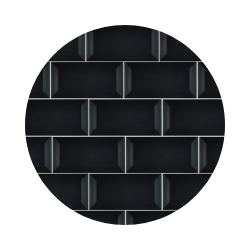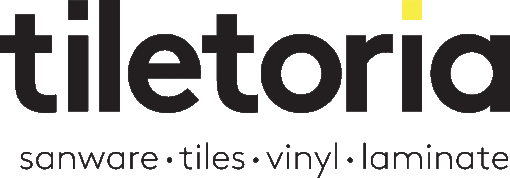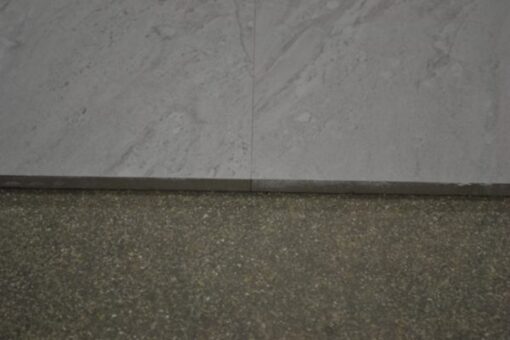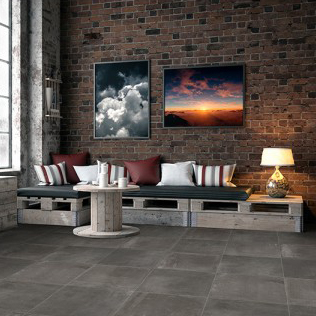Let’s suppose that you really like two ceramic or porcelain tiles that look very similar. One tile is rectified; the other is not. How do you choose? In this article, we will clarify what the difference is between the two and why it matters to you for your tile installation.
Rectified Tiles
Rectified tiles are tiles that have been cut to an exact size meaning there is very little size variation between the individual tiles. As a result, there is less chance of lippage (vertical displacement), making for a more accurate layout and easy installation. With both large format tiles and narrower grout joints recently gaining popularity, rectification has become an important topic. Rectified tiles have their edges mechanically finished in order to achieve a more precise facial dimension, a process that involves cutting or grinding a tile to a specific size. Accurate and consistent tile sizes are particularly important with long and larger format tiles.
Below is an image that shows you two rectified tile pieces next to one another. Notice how clean, precise and exact the edges look:
Non-Rectified Tiles
A non-rectified tile has uneven edges. This makes for a more natural looking tile, but they require a wider grout joint, giving a more traditional tiled look. Choosing a rectified or non-rectified tile is down to preference and the type of space you are tiling.
Below is an image that shows you two non-rectified tile pieces next to one another:
How rectified tiles are made
Rectified tiles are first baked in sheets, then cut to size after coming out of the kiln. This is why it can be calibrated (dimensionally consistent) to exact specifications. Tiles can expand or contract after firing. Because rectified tiles are cut to size after firing and after they have cooled to normal operating temperatures, they are assured of being accurately sized. Rectified tiles can be installed with grout joints of 3mm or less. Most other tiles are first shaped and then baked afterwards in a kiln, so it often has as a greater difference in size between tiles in the same box.
The appeal of rectified tiles
Since they’re so even and uniform, when you’re working with rectified tiles, only the thinnest of grout lines is necessary. A thin grout line can give an almost seamless look with the right coloured grout and tiles, and it’s a fantastic effect when well executed. Because they’re so carefully produced, rectified tiles can be used to create a very clean, even and symmetrical look.
Are rectified tiles expensive?
Price is almost always relative to the quality, type and size of tile that you’re after, but rectified tiles usually cost more than non-rectified tiles of a similar standard, because there’s a bit more work that goes into producing them. Similarly, depending on the size of the grout line you’re after and where you’re laying them, you may also need to have them laid on a special bedding or substrate to ensure that they’re suitably flush.
How do you choose?
Rectification does not make a tile better or worse. Rectification simply affects the kind of edges the tile has which, in turn, means that rectified tile is ideal for specific types of tile installation. Talk to your installer before anything’s agreed upon, and make sure everyone’s clear about what’s required. The rectified tile design isn’t for everyone. However, if that’s the design inspiration you envisioned, you will definitely want to select the rectified tile version of the tile style you love.








